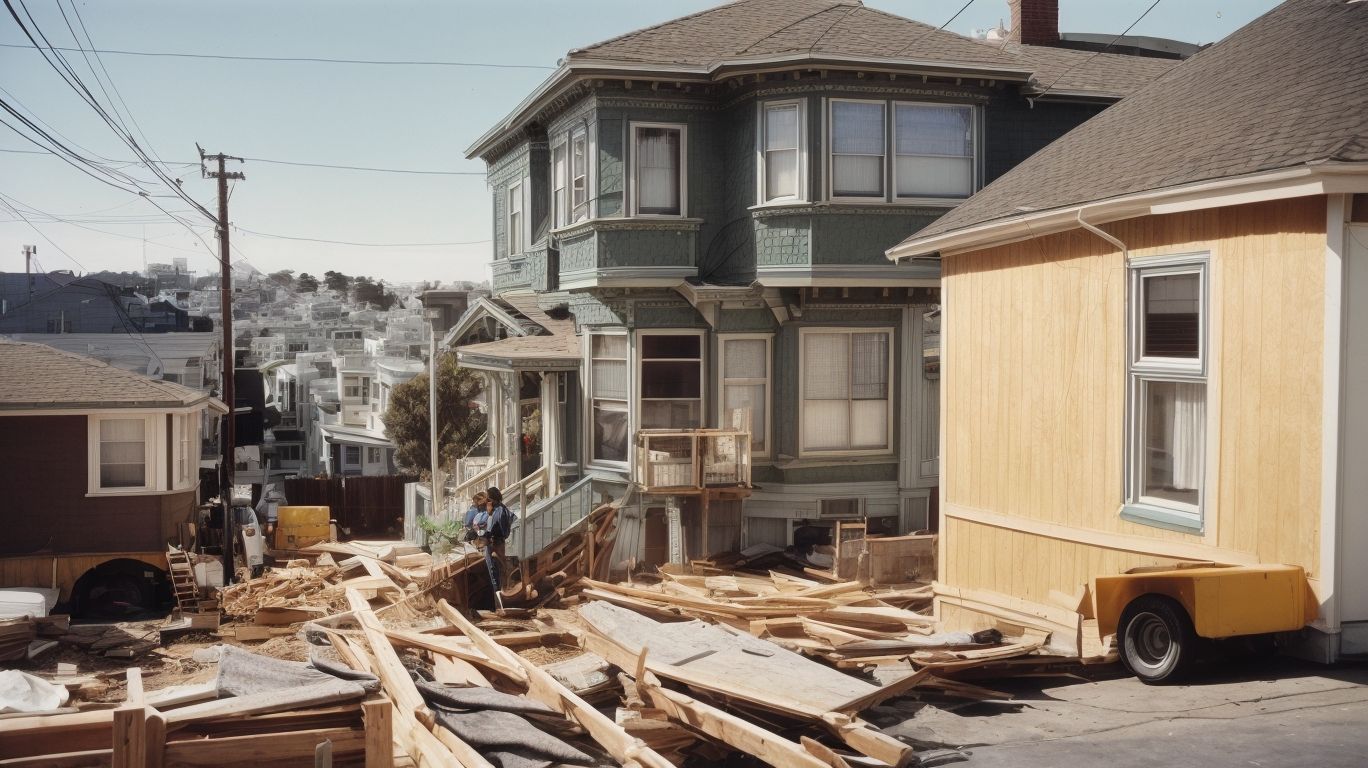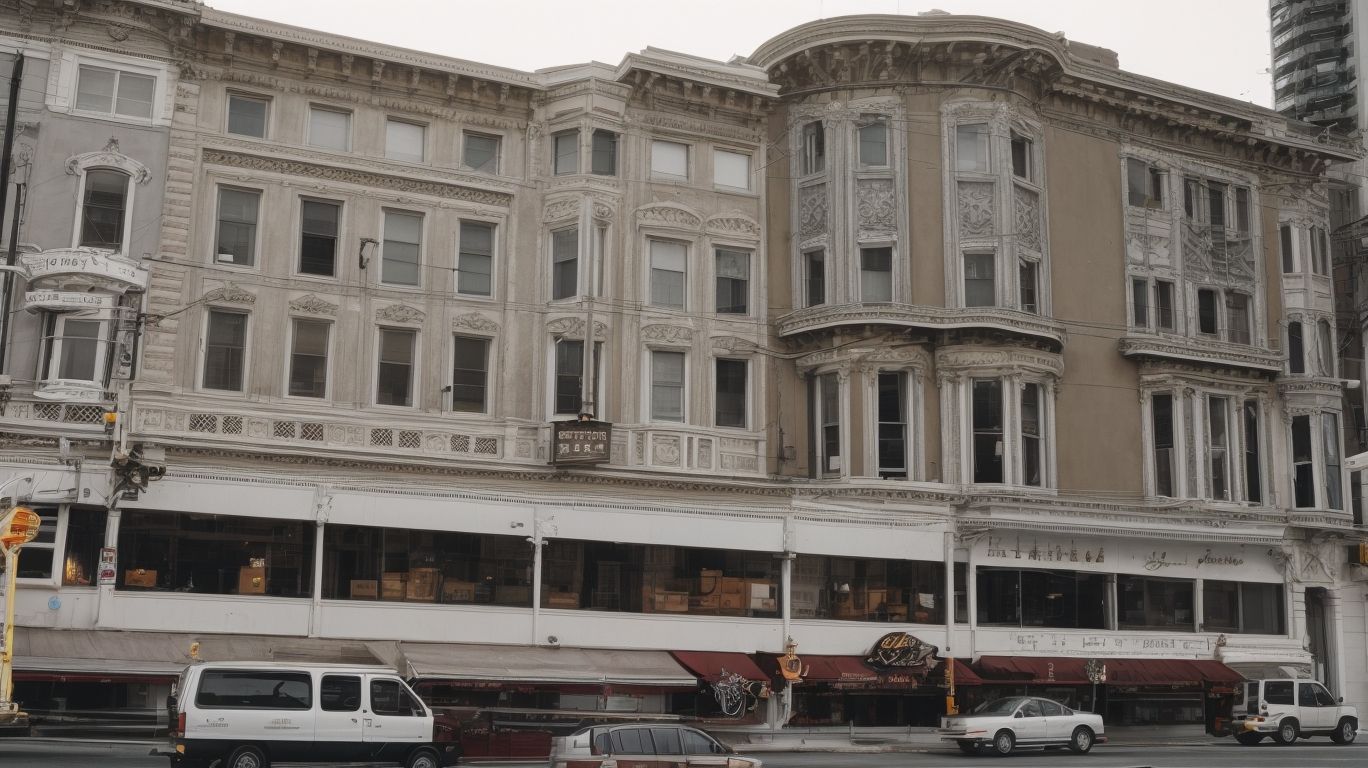
Seismic Retrofitting in San Francisco: Safeguarding Homes Against Earthquakes
Seismic retrofitting has become a crucial concern for homeowners in San Francisco as they seek to protect their homes from the potentially devastating effects of earthquakes. In this comprehensive guide, we will delve into the significance of seismic retrofitting in San Francisco, the methods involved, associated costs, and the array of benefits it offers. We will explore the risks of not undertaking seismic retrofitting and provide essential tips for homeowners to prepare for this critical structural enhancement.
By the end of this article, you will have a thorough understanding of seismic retrofitting and its importance in safeguarding homes against earthquakes in San Francisco.
What Is Seismic Retrofitting?
Seismic retrofitting involves the process of safeguarding homes and structures against the devastating effects of earthquakes through construction and structural reinforcement.
This process plays a crucial role in ensuring the seismic safety of buildings and infrastructure, as it helps to minimize damage and reduce the risk of structural failure during an earthquake. There are various methods used in seismic retrofitting, including adding steel bracings, reinforcing concrete elements, and improving the connections between different parts of the structure.
By implementing these retrofitting methods, buildings can withstand seismic forces and maintain their functionality, ultimately saving lives and preventing catastrophic loss.
Why Is Seismic Retrofitting Important in San Francisco?
Seismic retrofitting holds crucial importance in San Francisco due to its susceptibility to earthquakes, leading to an increased risk for vulnerable buildings and a significant seismic hazard that necessitates building resilience.
The city of San Francisco is located in a seismically active region, making it highly prone to earthquakes. With a history of destructive seismic events, the vulnerability of its buildings to such natural disasters is a pressing concern. The implementation of seismic retrofitting measures is essential to enhance the structural integrity of these buildings and safeguard the lives of residents and the city’s infrastructure.
By prioritizing building resilience, San Francisco can mitigate the potential devastation caused by future seismic events and ensure a safer environment for its inhabitants.
What Are the Risks of Not Seismic Retrofitting in San Francisco?
Not implementing seismic retrofitting in San Francisco poses significant risks, including heightened seismic vulnerability, potential structural damage, and the lack of effective risk mitigation measures.
This lack of retrofitting can leave buildings and infrastructure more susceptible to damage during an earthquake, putting the safety of residents and the stability of the city at risk. Without proactive measures in place, the structural integrity of buildings may be compromised, leading to costly repairs and potential hazards to occupants.
Implementing seismic retrofitting is crucial for reducing the impact of seismic events and safeguarding the community from devastating consequences.
What Are the Methods of Seismic Retrofitting?
Seismic retrofitting encompasses various methods including foundation repair, seismic upgrades, and retrofitting techniques aimed at enhancing the structural resilience of buildings and homes.
These techniques involve assessing the existing structure, identifying potential weaknesses, and implementing measures to strengthen the building’s ability to withstand seismic forces. Foundation repair may include installing additional support or reinforced materials to stabilize the building’s base.
Seismic upgrades often involve adding bracing or dampers to absorb and dissipate seismic energy, while retrofitting methods may include strengthening walls, roofs, and connections to improve overall stability and safety. Each approach is tailored to the specific needs and vulnerabilities of the structure to ensure maximum effectiveness.
Foundation Bolting
Foundation bolting is a fundamental component of seismic retrofitting, involving the reinforcement of the foundation to enhance seismic design and resilience, utilizing robust building materials.
This process aims to secure a building’s foundation to resist the lateral forces caused by seismic activity. By utilizing anchor bolts, washers, and epoxy adhesives, the foundation is connected to the structural framing, preventing separation during an earthquake.
Seismic retrofitting also considers the soil condition and building type, ensuring that appropriate building materials and techniques are used to achieve optimal resilience. This pivotal step in foundation retrofit plays a crucial role in safeguarding structures and ensuring their ability to withstand seismic events.
Cripple Wall Bracing
Cripple wall bracing involves obtaining construction permits and implementing seismic retrofitting measures to reinforce and stabilize the cripple walls, thereby enhancing the structural resilience of buildings.
This process typically begins with the assessment of the building’s structural integrity and identification of the most vulnerable areas. Once the necessary permits are acquired, contractors proceed with reinforcing the cripple walls using methods such as adding shear walls, anchoring the walls to the foundation, and installing plywood bracing. These measures significantly improve the building’s ability to withstand seismic forces, ensuring the safety of occupants and minimizing potential damage during an earthquake.
Shear Wall Installation
Shear wall installation involves meticulous structural analysis, compliance with retrofitting regulations, and comprehensive seismic assessment to ensure the effective reinforcement of building structures.
This process begins with a thorough structural analysis to identify the specific vulnerabilities and requirements for the building. Once the structural analysis is completed, the retrofitting team can then ensure that the installation of the shear walls adheres to all relevant regulations and codes.
A comprehensive seismic assessment is crucial in understanding the potential impact of seismic activity on the building and determines the type and placement of shear walls required for optimal reinforcement. Through these steps, the shear wall installation process plays a vital role in fortifying structures against seismic forces.
Soft Story Retrofit
Soft story retrofitting adheres to stringent retrofitting standards and focuses on mitigating seismic vulnerability through thorough retrofitting inspections and targeted reinforcement measures for multi-story buildings.
This approach to retrofitting is essential for ensuring the structural integrity and safety of buildings in seismic-prone areas. By addressing weak points in the building’s design and construction, soft story retrofitting plays a pivotal role in reducing the risk of collapse and damage during seismic events.
Compliance with retrofitting standards is critical in this process, as it ensures that the retrofitting measures are effective and capable of withstanding the forces exerted during earthquakes. Comprehensive retrofitting inspections allow for a detailed evaluation of the building’s vulnerabilities, enabling engineers to tailor retrofitting solutions to address specific weaknesses and enhance overall seismic resilience.
Roof-to-Wall Connections
Roof-to-wall connections play a pivotal role in enhancing building resilience and ensuring superior seismic performance by implementing effective seismic retrofitting solutions for the structural integration of roofs and walls.
These connections significantly contribute to the overall stability and safety of a building in the event of an earthquake. By securing the roof to the walls, they help distribute forces and prevent the roof from becoming a detached or collapsing hazard during seismic activity. Properly installed roof-to-wall connections can minimize structural damage and reduce the risk of total building failure, ultimately safeguarding occupants and preserving the integrity of the structure.
How Much Does Seismic Retrofitting Cost in San Francisco?
The cost of seismic retrofitting in San Francisco varies based on factors such as the scope of the project, the structural analysis involved, and the prevailing costs within the construction industry.
These considerations significantly impact the overall seismic retrofitting cost. The scope of a project, whether it’s a basic retrofit or an extensive renovation, directly affects the expenses. The structural analysis, including assessment and design, plays a crucial role in determining the budget. The influence of the construction industry extends to material prices, labor costs, and availability of specialized professionals, all of which contribute to the overall cost of seismic retrofitting.
What Are the Benefits of Seismic Retrofitting?
Seismic retrofitting offers substantial benefits, including enhanced home protection against seismic events and the mitigation of risks associated with soil liquefaction, ultimately safeguarding lives and property.
Considering the unpredictable nature of earthquakes, retrofitting ensures that homes and buildings are reinforced, reducing the likelihood of structural damage and collapse. This not only protects the inhabitants but also preserves the value of the property.
Addressing soil liquefaction risks through retrofitting measures enhances the stability of the ground, minimizing the potential for foundation settlement and structural failure, thereby contributing to long-term safety and security.
Protects Against Structural Damage
Seismic retrofitting effectively protects structures against potential structural damage by employing seismic strengthening measures implemented by qualified retrofit contractors.
These specialized contractors play a crucial role in ensuring that buildings and infrastructure are prepared to withstand seismic activity. By reinforcing key structural components and implementing resilient materials, seismic retrofitting reduces the vulnerability of structures and minimizes the risk of collapse or extensive damage during earthquakes.
The expertise and attention to detail provided by retrofit contractors are essential for safeguarding the integrity of buildings and ensuring the safety of occupants and surrounding communities.
Increases Property Value
Seismic retrofitting contributes to a significant increase in property value by ensuring compliance with retrofitting regulations and addressing the seismic hazard, thereby enhancing the overall market value of properties.
This enhancement in value is due to the reinforced structural integrity and reduced risk of damage in the event of seismic activity, which provides potential buyers with a sense of security and peace of mind. Properties that have undergone seismic retrofitting often attract more favorable insurance premiums, making them more appealing to prospective buyers. By adhering to retrofitting regulations, property owners also demonstrate their commitment to safety and resilience, further adding to the desirability and marketability of their properties.
Provides Peace of Mind
Seismic retrofitting provides homeowners with essential peace of mind by incorporating comprehensive seismic assessment and adhering to established retrofitting guidelines to implement effective seismic retrofitting measures for their properties.
This process ensures that homeowners can have a sense of security and confidence in the structural integrity of their homes. By following the seismic assessment protocols and retrofitting guidelines, homeowners can rest assured that their properties are better equipped to withstand seismic events. The implementation of effective retrofitting measures further strengthens the foundation, improves structural stability, and reduces the risk of extensive damage during earthquakes, ultimately offering homeowners the peace of mind they need to feel safe and secure in their own homes.
How Can Homeowners Prepare for Seismic Retrofitting?
Homeowners can prepare for seismic retrofitting by initiating a comprehensive seismic evaluation, understanding the retrofitting process, and enhancing their earthquake preparedness to ensure a smooth and effective retrofitting experience.
This initial step of conducting a seismic evaluation allows homeowners to assess the structural integrity of their property and identify potential weaknesses. With a clear understanding of the retrofitting process, homeowners can make informed decisions regarding necessary upgrades.
Prioritizing earthquake preparedness through measures such as securing large appliances and furniture and creating a family emergency plan can significantly improve safety during seismic events.
Conduct a Seismic Evaluation
Conducting a thorough seismic evaluation is imperative for homeowners to assess the vulnerability of their properties and determine the necessary risk mitigation strategies as part of the seismic retrofitting preparation process.
It allows homeowners to have a comprehensive understanding of how their structures would perform during an earthquake, identifying potential weak points and areas needing reinforcement. The seismic evaluation plays a critical role in formulating a customized risk mitigation plan, focusing on strengthening the building’s integrity and reducing the potential damage that could result from seismic activity. By prioritizing seismic evaluations, homeowners can proactively safeguard their properties and ensure the safety of their families and investments.”
Hire a Licensed Contractor
Homeowners should prioritize hiring a licensed contractor experienced in seismic retrofitting, ensuring compliance with building codes and the completion of thorough retrofitting inspections for optimal results.
This is crucial for the safety and resilience of the home, as compliance with building codes guarantees that the retrofitting work meets the necessary standards. A licensed contractor possesses the expertise to assess the specific needs of the property and execute the retrofitting process effectively. They can also conduct thorough inspections to identify any potential vulnerabilities and ensure that the retrofitting is comprehensive and robust.
Engaging a licensed contractor for seismic retrofitting provides homeowners with peace of mind, knowing that their property is well-prepared to withstand seismic events.
Obtain Necessary Permits
Securing the necessary permits from regulatory authorities and understanding the associated retrofitting standards is vital for homeowners embarking on seismic retrofitting, ensuring adherence to industry regulations and standards.
This process is crucial as it ensures that the retrofitting work meets the required safety standards, thereby safeguarding the structural integrity of the buildings. The construction industry plays a significant role in overseeing the compliance of seismic retrofitting, emphasizing the importance of obtaining permits to ensure that the work is carried out in accordance with regulations.
By obtaining the necessary permits, homeowners can have the peace of mind that their retrofitting project is conducted in a manner that aligns with industry standards and governmental regulations.
Secure Personal Belongings
As part of earthquake preparedness, homeowners should secure personal belongings and ensure compliance with retrofitting regulations to safeguard their possessions during the seismic retrofitting process.
This is crucial because seismic retrofitting can involve significant structural upgrades to ensure a building’s stability during an earthquake. Therefore, securing personal belongings not only protects them from potential damage during the retrofitting work but also ensures that they remain safe in the event of an earthquake.
Compliance with retrofitting regulations is essential for the safety and security of the entire property and its inhabitants, emphasizing the importance of proactive measures for earthquake preparedness.
Make Temporary Living Arrangements
Planning for temporary living arrangements is essential for homeowners undergoing seismic retrofitting, considering the potential impact on seismic retrofitting costs and the quest for resilient housing during the retrofitting period.
During seismic retrofitting, homeowners face the challenge of ensuring their safety and well-being while their homes undergo necessary enhancements. Temporary living arrangements not only provide a sense of security but also allow for smoother project execution.
Understanding the seismic retrofitting costs upfront helps in budgeting for both the retrofitting process and temporary housing. Emphasizing the pursuit of resilient housing, homeowners can explore various options for temporary living, ensuring they remain prepared and resilient throughout the retrofitting period.




No Comments